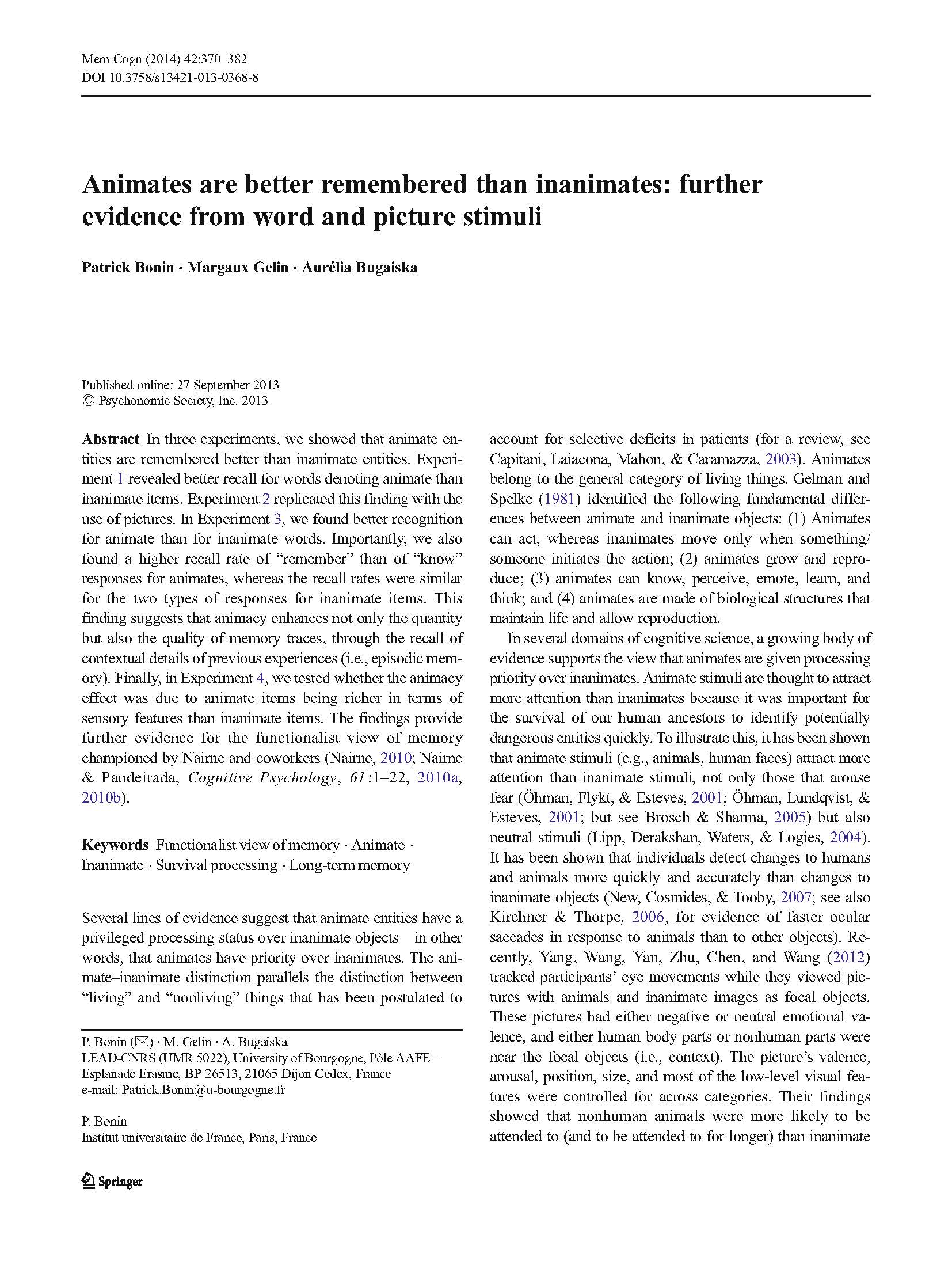In three experiments, we showed that animate entities are remembered better than inanimate entities. Experiment 1 revealed better recall for words denoting animate than inanimate items. Experiment 2 replicated this finding with the use of pictures. In Experiment 3, we found better recognition for animate than for inanimate words. Importantly, we also found a higher recall rate of “remember” than of “know” responses for animates, whereas the recall rates were similar for the two types of responses for inanimate items. This finding suggests that animacy enhances not only the quantity but also the quality of memory traces, through the recall of contextual details of previous experiences (i.e., episodic memory). Finally, in Experiment 4, we tested whether the animacy effect was due to animate items being richer in terms of sensory features than inanimate items. The findings provide further evidence for the functionalist view of memory championed by Nairne and coworkers (Nairne, 2010; Nairne & Pandeirada, Cognitive Psychology, 61 :1–22, 2010a, 2010b).
Animates are better remembered than inanimates: Further evidence from word and picture stimuli
